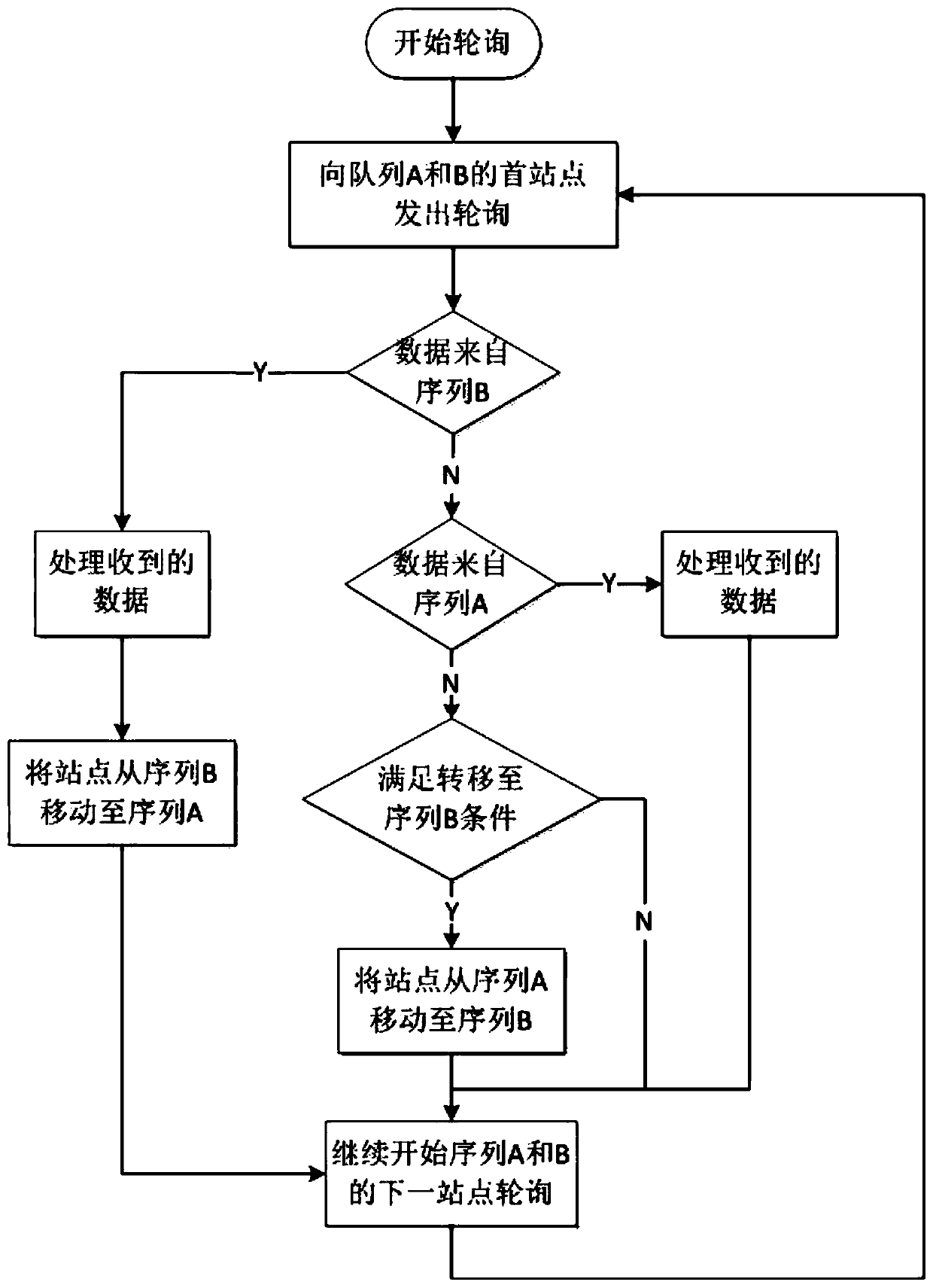A terminal-oriented tdma two-level time slot management method
A management method and time slot technology, applied in the field of communication, to achieve the effects of optimizing waiting time, improving task adaptability, and resolving conflicts
- Summary
- Abstract
- Description
- Claims
- Application Information
AI Technical Summary
Problems solved by technology
Method used
Image
Examples
Embodiment Construction
[0019] The present invention will be described in further detail below:
[0020] As we all know, polling intervals or working time slots can be reasonably designed according to statistical characteristics, and each time slot is divided into two stages: base station (AP) downlink and client terminal (CPE, ie mobile station) uplink.
[0021] The base station (AP) acts as the network polling "controller". In order to more effectively handle the communication needs of the mobile station, the base station divides customer equipment (CPE) into two types. The first type (Type A) is an active station, usually a station that has been sending data or maintaining communication continuously, and is usually placed in a "hot" active queue; the second type (Type B) is a dormant station or a low-frequency operation "Lazy" sites, usually sites with no poll responses or low response times, are treated as inactive queues.
[0022] Priority in most networks is designed for customer premises equ...
PUM
 Login to View More
Login to View More Abstract
Description
Claims
Application Information
 Login to View More
Login to View More - R&D
- Intellectual Property
- Life Sciences
- Materials
- Tech Scout
- Unparalleled Data Quality
- Higher Quality Content
- 60% Fewer Hallucinations
Browse by: Latest US Patents, China's latest patents, Technical Efficacy Thesaurus, Application Domain, Technology Topic, Popular Technical Reports.
© 2025 PatSnap. All rights reserved.Legal|Privacy policy|Modern Slavery Act Transparency Statement|Sitemap|About US| Contact US: help@patsnap.com



